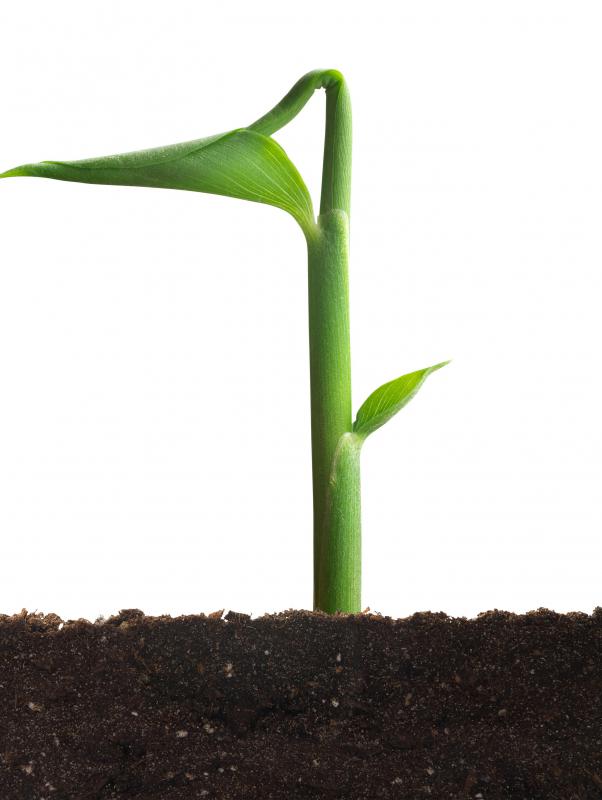At WiseGEEK, we're committed to delivering accurate, trustworthy information. Our expert-authored content is rigorously fact-checked and sourced from credible authorities. Discover how we uphold the highest standards in providing you with reliable knowledge.
What are the Different Types of Seed Starting Soil?
There are many choices of seed starting soils and mediums, such as garden soil and compost mixes, soilless mixes that contain mainly sphagnum peat moss, or other environmentally-friendly mixes containing coconut coir, the fibers extracted from the husk of a coconut. Which seed starting soil is appropriate depends on the type of vegetation being grown. Some seed starting mixes actually contain no soil, because soils are sometimes too heavy for seed germination and may contain diseases that could be harmful to plants. There is a current trend toward soilless mixes, but there are many gardeners who use traditional seed starting soil with success.
The seed germinating mix recommended by Cornell University is soilless “peat-lite,” which is a mix of sphagnum peat moss and either perlite or vermiculite. This mix is commonly found in pellet form and is a popular choice, as it prevents plants from damping off. Damping off is caused by fungal diseases that propagate amongst seedlings in growing containers, and using soilless germinating mixes, like “peat-lite,” is a solution to the problem. Sphagnum peat moss is partially decomposed and efficient at water retention, while perlite is a volcanic glass that is light in weight after heat processing.

The harvesting of peat moss and other vegetation can be destructive to wetlands, however, and there are other seed starting mediums available that are deemed more environmentally-friendly. Coconut coir is one of these mediums, as the husks of the coconut are more sustainable and are almost always free of disease because they contain a beneficial fungus. The fibers used in this seed starting soil contain colonies of Aspergillus terreus, a beneficial fungus that resists pathogenic fungi known to cause detrimental plant disease.

When a seed starting soil is used, gardeners can also supplement the substrate with natural additives to fight off fungus and diseases as well. For example, using a fine dusting of cinnamon on the surface of the soil fights fungus, as does frequent misting with diluted chamomile tea. These types of methods, used in addition to seed starting soils, will most often times be conducive to healthy plant cultivation. Some more complex mixes contain traditional soil, coupled with compost and lime, which provides plants with the necessary components for healthy growth and disease prevention. The lime raises the pH of the mix, which is an inhospitable environment for many common pathogens, and it also provides calcium and magnesium, nutrients that are often times depleted in normal ground soil.
AS FEATURED ON:
AS FEATURED ON:













Discuss this Article
Post your comments